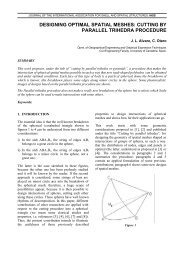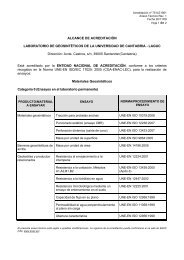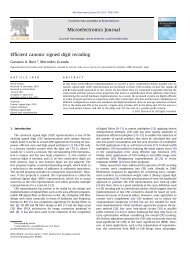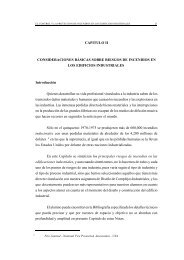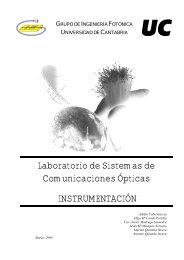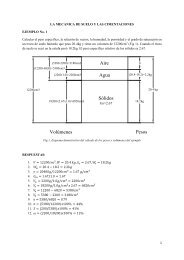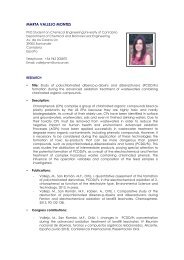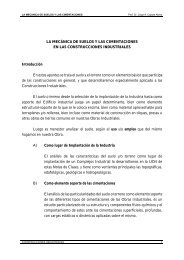LM1876 Overture Audio Power Amplifier Series Dual 20W Audio ...
LM1876 Overture Audio Power Amplifier Series Dual 20W Audio ...
LM1876 Overture Audio Power Amplifier Series Dual 20W Audio ...
You also want an ePaper? Increase the reach of your titles
YUMPU automatically turns print PDFs into web optimized ePapers that Google loves.
<strong>LM1876</strong><br />
Application Information<br />
MUTE MODE<br />
By placing a logic-high voltage on the mute pins, the signal<br />
going into the amplifiers will be muted. If the mute pins are<br />
left floating or connected to a logic-low voltage, the amplifiers<br />
will be in a non-muted state. There are two mute pins,<br />
one for each amplifier, so that one channel can be muted<br />
without muting the other if the application requires such a<br />
configuration. Refer to the Typical Performance Characteristics<br />
section for curves concerning Mute Attenuation vs<br />
Mute Pin Voltage.<br />
STANDBY MODE<br />
The standby mode of the <strong>LM1876</strong> allows the user to drastically<br />
reduce power consumption when the amplifiers are<br />
idle. By placing a logic-high voltage on the standby pins, the<br />
amplifiers will go into Standby Mode. In this mode, the current<br />
drawn from the V CC supply is typically less than 10 µA<br />
total for both amplifiers. The current drawn from the V EE supply<br />
is typically 4.2 mA. Clearly, there is a significant reduction<br />
in idle power consumption when using the standby mode.<br />
There are two Standby pins, so that one channel can be put<br />
in standby mode without putting the other amplifier in<br />
standby if the application requires such flexibility. Refer to<br />
the Typical Performance Characteristics section for<br />
curves showing Supply Current vs. Standby Pin Voltage for<br />
both supplies.<br />
UNDER-VOLTAGE PROTECTION<br />
Upon system power-up, the under-voltage protection circuitry<br />
allows the power supplies and their corresponding capacitors<br />
to come up close to their full values before turning<br />
on the <strong>LM1876</strong> such that no DC output spikes occur. Upon<br />
turn-off, the output of the <strong>LM1876</strong> is brought to ground before<br />
the power supplies such that no transients occur at<br />
power-down.<br />
OVER-VOLTAGE PROTECTION<br />
The <strong>LM1876</strong> contains over-voltage protection circuitry that<br />
limits the output current to approximately 3.5 Apk while also<br />
providing voltage clamping, though not through internal<br />
clamping diodes. The clamping effect is quite the same,<br />
however, the output transistors are designed to work alternately<br />
by sinking large current spikes.<br />
SPiKe PROTECTION<br />
The <strong>LM1876</strong> is protected from instantaneous<br />
peak-temperature stressing of the power transistor array.<br />
The Safe Operating graph in the Typical Performance<br />
Characteristics section shows the area of device operation<br />
where SPiKe Protection Circuitry is not enabled. The waveform<br />
to the right of the SOA graph exemplifies how the dynamic<br />
protection will cause waveform distortion when enabled.<br />
THERMAL PROTECTION<br />
The <strong>LM1876</strong> has a sophisticated thermal protection scheme<br />
to prevent long-term thermal stress of the device. When the<br />
temperature on the die reaches 165˚C, the <strong>LM1876</strong> shuts<br />
down. It starts operating again when the die temperature<br />
drops to about 155˚C, but if the temperature again begins to<br />
rise, shutdown will occur again at 165˚C. Therefore, the device<br />
is allowed to heat up to a relatively high temperature if<br />
the fault condition is temporary, but a sustained fault will<br />
cause the device to cycle in a Schmitt Trigger fashion between<br />
the thermal shutdown temperature limits of 165˚C and<br />
155˚C. This greatly reduces the stress imposed on the IC by<br />
thermal cycling, which in turn improves its reliability under<br />
sustained fault conditions.<br />
Since the die temperature is directly dependent upon the<br />
heat sink used, the heat sink should be chosen such that<br />
thermal shutdown will not be reached during normal operation.<br />
Using the best heat sink possible within the cost and<br />
space constraints of the system will improve the long-term<br />
reliability of any power semiconductor device, as discussed<br />
in the Determining the Correct Heat Sink Section.<br />
DETERMlNlNG MAXIMUM POWER DISSIPATION<br />
<strong>Power</strong> dissipation within the integrated circuit package is a<br />
very important parameter requiring a thorough understanding<br />
if optimum power output is to be obtained. An incorrect<br />
maximum power dissipation calculation may result in inadequate<br />
heat sinking causing thermal shutdown and thus limiting<br />
the output power.<br />
Equation (1) exemplifies the theoretical maximum power dissipation<br />
point of each amplifier where V CC is the total supply<br />
voltage.<br />
P DMAX =V CC 2/2π 2 R L (1)<br />
Thus by knowing the total supply voltage and rated output<br />
load, the maximum power dissipation point can be calculated.<br />
The package dissipation is twice the number which results<br />
from equation (1) since there are two amplifiers in each<br />
<strong>LM1876</strong>. Refer to the graphs of <strong>Power</strong> Dissipation versus<br />
Output <strong>Power</strong> in the Typical Performance Characteristics<br />
section which show the actual full range of power dissipation<br />
not just the maximum theoretical point that results from<br />
equation (1).<br />
DETERMINING THE CORRECT HEAT SINK<br />
The choice of a heat sink for a high-power audio amplifier is<br />
made entirely to keep the die temperature at a level such<br />
that the thermal protection circuitry does not operate under<br />
normal circumstances.<br />
The thermal resistance from the die (junction) to the outside<br />
air (ambient) is a combination of three thermal resistances,<br />
θ JC , θ CS , and θ SA . In addition, the thermal resistance, θ JC<br />
(junction to case), of the <strong>LM1876</strong>TF is 2˚C/W and the<br />
<strong>LM1876</strong>T is 1˚C/W. Using Thermalloy Thermacote thermal<br />
compound, the thermal resistance, θ CS (case to sink), is<br />
about 0.2˚C/W. Since convection heat flow (power dissipation)<br />
is analogous to current flow, thermal resistance is<br />
analogous to electrical resistance, and temperature drops<br />
are analogous to voltage drops, the power dissipation out of<br />
the <strong>LM1876</strong> is equal to the following:<br />
P DMAX =(T JMAX −T AMB )/θ JA (2)<br />
where T JMAX = 150˚C, T AMB is the system ambient temperature<br />
and θ JA = θ JC + θ CS + θ SA .<br />
Once the maximum package power dissipation has been<br />
calculated using equation (1), the maximum thermal resistance,<br />
θ SA , (heat sink to ambient) in ˚C/W for a heat sink can<br />
be calculated. This calculation is made using equation (3)<br />
which is derived by solving for θ SA in equation (2).<br />
θ SA = [(T JMAX −T AMB )−P DMAX (θ JC +θ CS )]/P DMAX (3)<br />
Again it must be noted that the value of θ SA is dependent<br />
upon the system designer’s amplifier requirements. If the<br />
ambient temperature that the audio amplifier is to be working<br />
www.national.com 12



